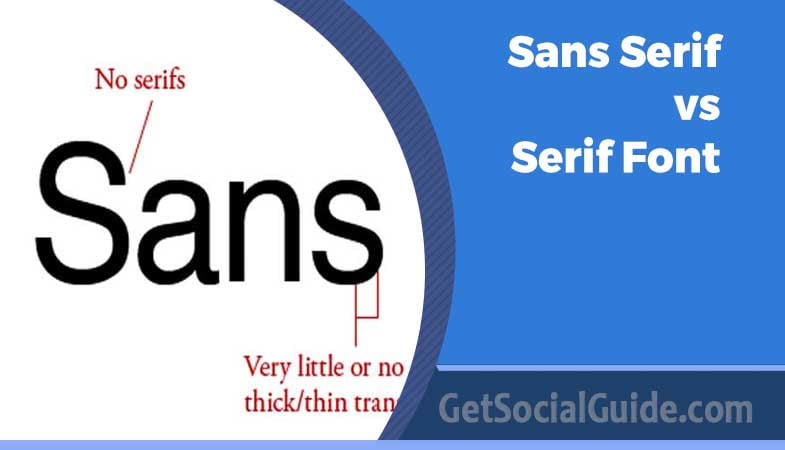Sans Serif vs Serif Font: Which Should You Use & When?
What you’re currently wearing says a lot about you. People often form initial impressions based on clothing, making assumptions about your style, personality, age, or the image you want to convey. Similar to choosing the right outfit for an occasion, selecting fonts for your branding and website design is crucial. Fonts, like clothing, offer a first impression of your brand, setting the tone for your overall identity. It’s essential to be intentional and strategic in your font choices to effectively communicate your brand image.
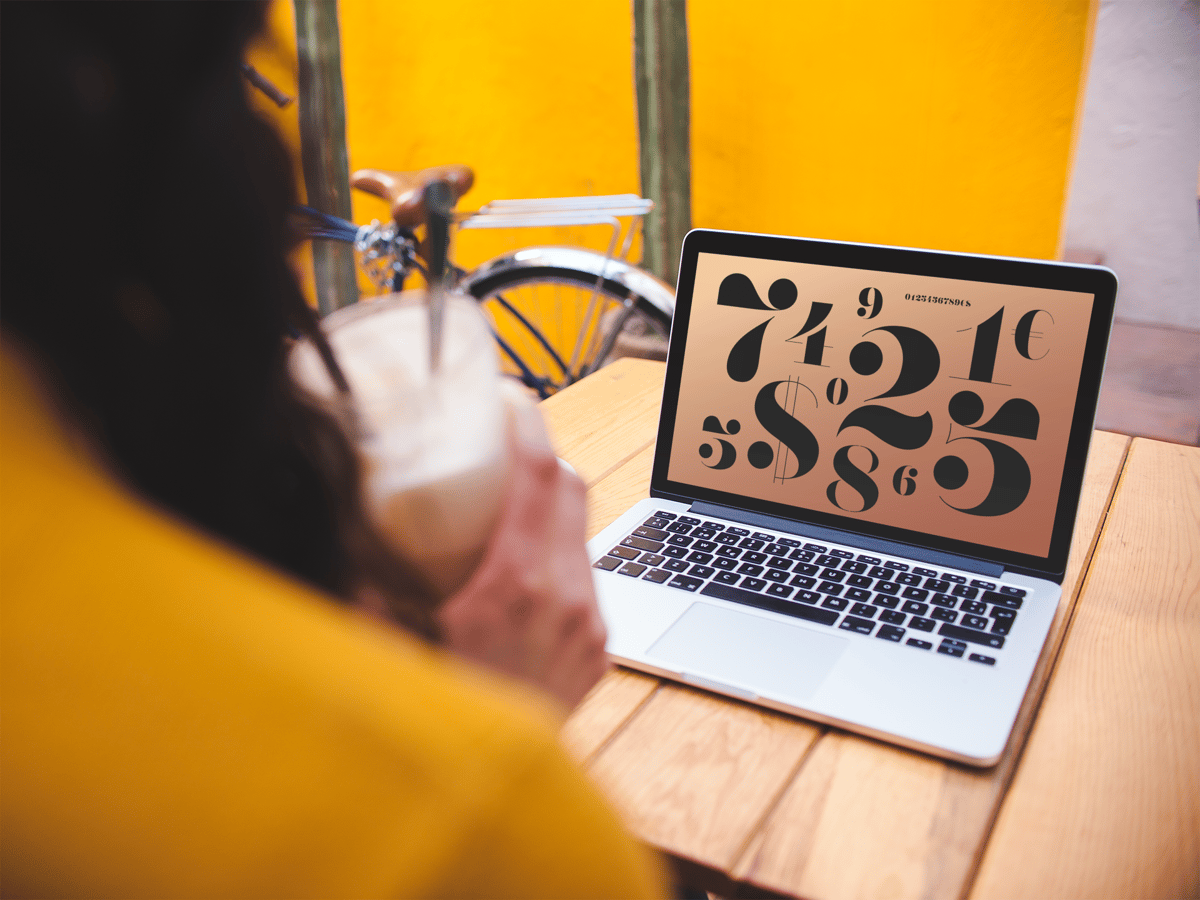
Why Is Choosing the Right Font so Important?
Selecting the right “outfit” for your brand is crucial. Fonts, like clothing styles, vary in casualness and expressiveness, and the wrong choice can alter your brand’s personality, leading to misconceptions about your company. The impact of font selection is evident in the example below, where iconic logos take on a completely different tone when switched to Comic Sans. Brands that once appeared clean and refined now seem childish and playful. This highlights the importance of choosing a font that aligns with your brand’s identity to ensure an accurate perception. To begin, it’s essential to understand font categories, with serif and sans serif being the two main classifications, despite the plethora of other categories like script, display, and gothic.
Serif vs Sans Serif: What’s the Difference?
Distinguishing between serif and sans serif fonts is a crucial step in narrowing down your font choices. The distinction is straightforward, as the presence or absence of serifs defines each category. Serifs are decorative strokes that conclude a letter’s stem, often referred to as the “feet” of the letters. A font with serifs is called a serif font, while one without is labeled as sans serif, denoted by the term “sans.” The example below illustrates the contrast, with the serif font featuring ornamental details and extending serifs, while the sans serif font maintains clean and precise endings on the left.
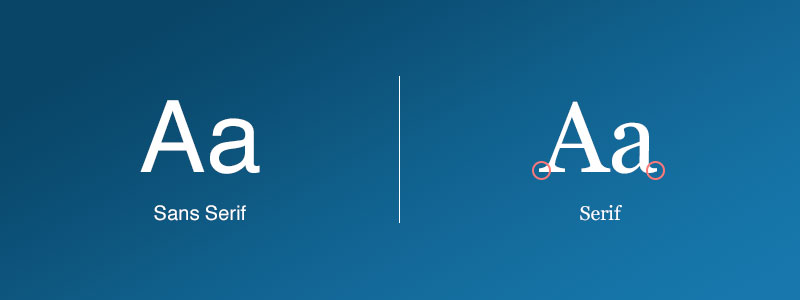
Both styles convey unique personalities and messages, emphasizing the importance of aligning your font choice with the intended message of your brand. Now that you grasp the disparity between serif and sans serif fonts, let’s explore the background and psychology behind each font style.
Natalie Downey, Senior Designer at Duckpin, explains, “The main difference between these two typefaces is the presence or absence of serifs within the letters.” She goes on to describe serifs as decorative lines or tapers added to the beginning and/or end of a letter’s stem, creating small horizontal and vertical planes within a word.
In simpler terms, serif fonts have these decorative lines or tapers, often called “tails” or “feet,” while sans-serif fonts lack them, hence the “sanes” in their name. According to Downey, sans-serif fonts are characterized by simple, clean lines that maintain the same width throughout, without the additional tails.
Common serif fonts include Times New Roman, Garamond, Baskerville, Georgia, and Courier New, while popular sans-serif fonts include Arial, Helvetica, Proxima Nova, Futura, and Calibri.
What Is a Serif Font?
Tips For Using Serif And Sans Serif Fonts Together
Follow the guidance of designers and utilize templates if you’re not a design expert. You don’t need to become a font-pairing master for Serif and Sans Serif fonts. Instead, leverage existing font combinations crafted by designers. Platforms like Easil offer templates with great font pairings that feature both Serif and Sans-Serif fonts.
Draw inspiration from free fonts. Explore our comprehensive guide on using free fonts to discover options in both Serif and Sans-Serif styles.
Refer to our extensive Font Pairing Guide, ideal for uncovering font combinations, including those with both Serif and Sans-Serif fonts.
Exercise caution with the number of fonts you use. Aim for a maximum of two fonts in your design to maintain a balanced ratio of Serif to Sans-Serif fonts. One of each is generally sufficient for most designs.
Consider the “mood” of your fonts. Serif fonts often convey a classic or formal mood, even an elegant one. On the other hand, Sans Serif fonts are typically described as modern, friendly, and minimal, exhibiting stylish simplicity without decorative strokes.
Determine the font that best suits your needs. When choosing between Serif and Sans Serif fonts, your selection will depend on various factors such as project type, desired mood, color scheme, and the nature of the images you’re incorporating. Both font types can be versatile and applied in a wide range of projects and applications.
What does a serif font say about your brand?
If you aim for a classic and traditional vibe in your designs, opting for serif fonts is the way to go. Robyn Young, founder of branding agency robyn young & co., explains, “Serif fonts have been widely used in books, newspapers, and magazines, which is why they remind us of more classical, formal, and sophisticated themes—think of Old English and Roman scripture.”
Serif fonts are an excellent choice for brands seeking to convey trustworthiness, establishment, and reliability. According to Natalie Downey, Senior Designer, “Because serif typefaces date back to the 18th century, companies that utilize serif fonts are often seen as more established, serious, and traditional.” She adds, “Consumers are drawn to the traditional look because of the implied heritage and loyalty of the brand.”
Serif Fonts Say Traditional, Established, and Trustworthy
The origin of serif fonts traces back to the 18th century, where stonemasons carved letters into rock surfaces. In contemporary times, serif fonts are prevalent in traditional mediums like newspapers, magazines, and books. This association with classic and refined aesthetics makes serif fonts a popular choice for companies aiming to convey these traits.
 As mentioned earlier, the distinctive feature of serif fonts lies in their decorative tails and strokes. Additionally, serif letters often incorporate varying stroke weights, resulting in some parts of a letter appearing thick while others are thin.
As mentioned earlier, the distinctive feature of serif fonts lies in their decorative tails and strokes. Additionally, serif letters often incorporate varying stroke weights, resulting in some parts of a letter appearing thick while others are thin.
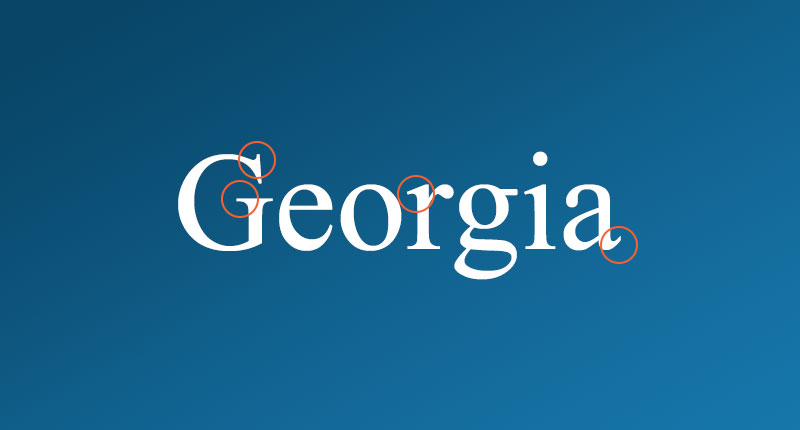
What Does a Serif Font Say About Your Brand?
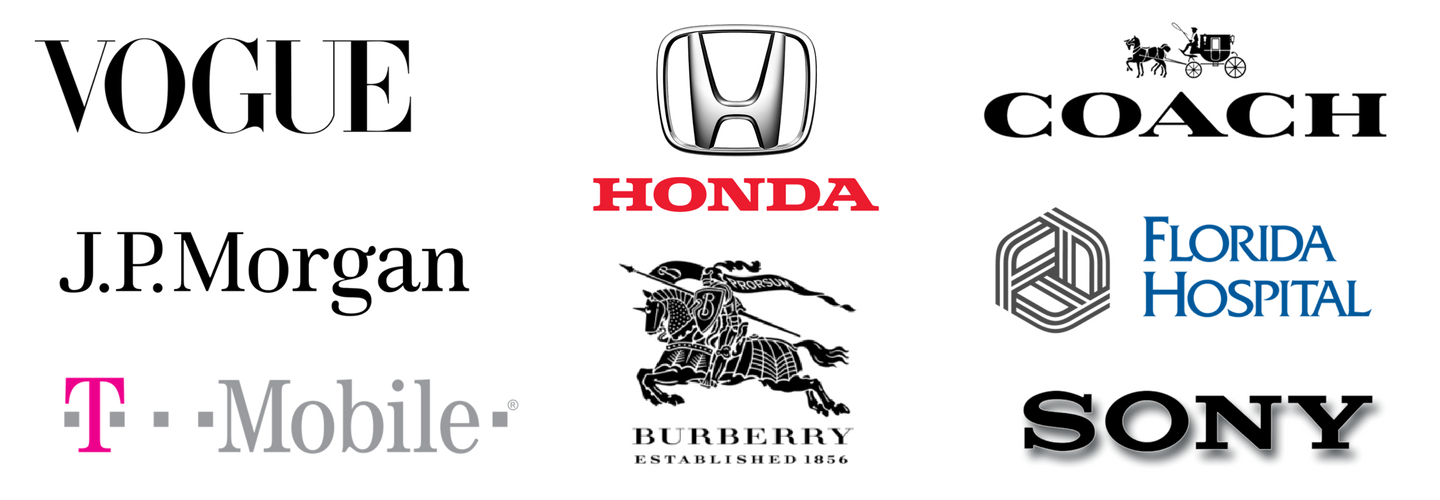
Photo Credit: Different Perspective
Examples of Serif Fonts in Design:
The New York Times
The New York Times, a venerable publication established in the 1850s, employs a serif font across various elements, including its logo and article text. This use of serif fonts is intentional, aiming to convey a sense of tradition and reputability. Additionally, serifs are traditionally linked to print newspapers, enhancing the formality and credibility of The New York Times.
Sans Serif Fonts Say Modern, Approachable, and Clean
In contrast to serif fonts, sans serif fonts convey a distinct message. While serif fonts emphasize tradition and history, sans serif fonts opt for simplicity and a modern feel. The key features of sans serif fonts include the absence of decorative serifs and the utilization of simple, uniform lines. Web designers often favor sans serif fonts for on-screen applications due to their clean, crisp lines, which enhance legibility on digital displays.
What Does a Sans Serif Font Say About Your Brand?
Sans serif fonts convey a sense of casualness, informality, friendliness, and approachability. Companies aiming for a youthful and relatable brand image often opt for sans serif fonts.
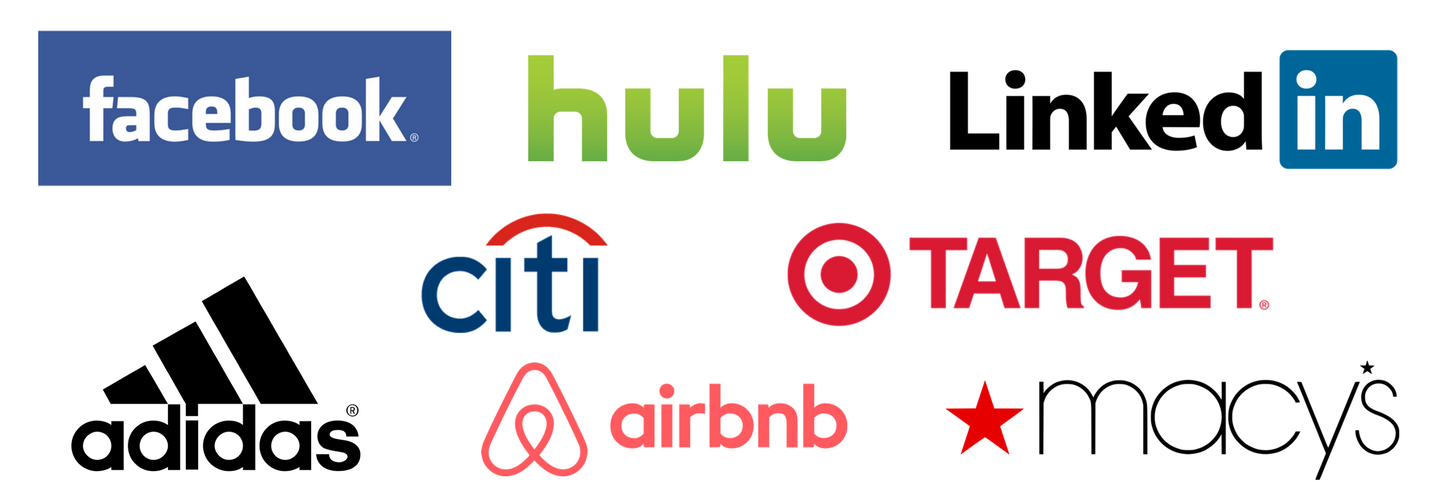
Photo Credit: Different Perspective
These characteristics make sans serif fonts a popular choice for many start-up and tech companies aiming to convey a cutting-edge and humanistic image. Some popular sans serif fonts include Helvetica, Open Sans, Proxima Nova, and Arial.
Sans serif fonts are commonly used in digital interfaces, website design, and mobile applications due to their clean and modern appearance. Their simplicity and straightforward design contribute to a contemporary and user-friendly aesthetic.
When selecting a font for your brand or design, it’s essential to consider the overall message and image you want to convey. Serif and sans serif fonts each have their distinct characteristics, and choosing the right one depends on the personality and values you want your brand to embody. Experimenting with different fonts and understanding their impact on perception can help you make informed decisions about your brand’s visual identity.
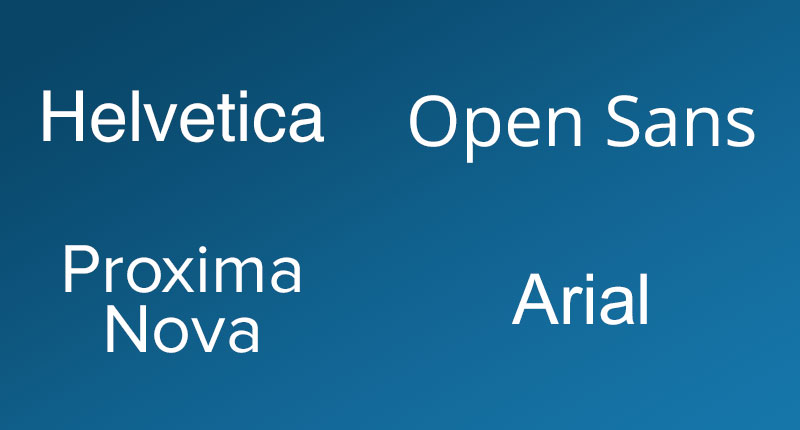
Examples of Sans Serif Fonts in Design:
Wix
Wix is a well-known name, offering a cloud-based Content Management System (CMS) that simplifies website building. Wix strategically communicates its key messages – ease of use, excellent customer support, and the enjoyment of creating a website – through its font choice. Opting for a clean and rounded font, Wix cultivates an atmosphere of relaxation and approachability, ensuring that individuals feel at ease and unburdened when interacting with their brand. This deliberate font selection aims to transform the perception of website creation from an intimidating task to an enjoyable experience.
HubSpot
HubSpot, a prominent company in the industry, employs a sans serif font in its branding strategy. The rounded and clean design of both their logo and website fonts instill a sense of friendliness and approachability. This choice of a youthful font contributes to humanizing their brand, fostering relatability, and making the company more accessible to their audience.
Sans Serif or Serif – So, Which One Should You Use?
The answer to choosing between serif and sans serif fonts is not a one-size-fits-all solution. Although some high-profile companies have embraced sans serif fonts in rebranding efforts, it doesn’t imply that everyone should follow suit. The key is to select a font that effectively communicates the intended message and reflects your brand’s personality. This decision varies for each company. For instance, a trendy tech company like Uber aims to convey a different message compared to a more formal entity like The New York Times.
Before embarking on the search for a font, it’s crucial to brainstorm the qualities and characteristics that define your brand. Consider the mediums through which people will interact with your company. This approach provides a roadmap for font research, allowing you to evaluate potential fonts against your brand’s qualities and use cases. Remember that a font can significantly alter how your brand is perceived. Take Apple as an example. In its early days, Apple primarily used a serif font in its branding before transitioning to a more modern sans serif font. The two examples below illustrate the shift. Your font and design choices should align with and reflect your brand’s essence.
Choose the Font That Exemplifies Your Brand
When employed appropriately and selected for the right reasons, both serif and sans serif fonts can be effective. The critical factor is choosing a font that aligns with your brand. It involves finding a font that creates the desired first impression and consistently embodies your brand’s qualities. Although there’s no universal solution for selecting the perfect font, some general guidelines can assist you in making the right choice:
1. Don’t Overload Your Brand With Too Many Fonts
It might be tempting to use a variety of fonts in your designs, but doing so can actually harm your brand. A rule of thumb to follow when selecting fonts is to limit yourself to one to three different fonts. Using more than that can make your designs appear cluttered, and you may encounter the issue of different fonts competing with each other.
2. Choose Fonts That Have the Right Amount of Contrast.
Selecting multiple fonts for your brand can be an effective way to establish hierarchy in your designs. However, it can be challenging to choose two fonts that strike the right balance of contrast while still complementing each other. According to the online design tool Canva, one approach is to find fonts that share a common quality. For instance, you might select two fonts with similar letter height or width, or opt for fonts created by the same designer. Merriweather and Merriweather Sans serve as a good example of two fonts that contrast effectively while still maintaining cohesiveness. These fonts were both designed by the same individual, resulting in shared qualities in the spacing and shapes of the letters that contribute to a sense of unity.
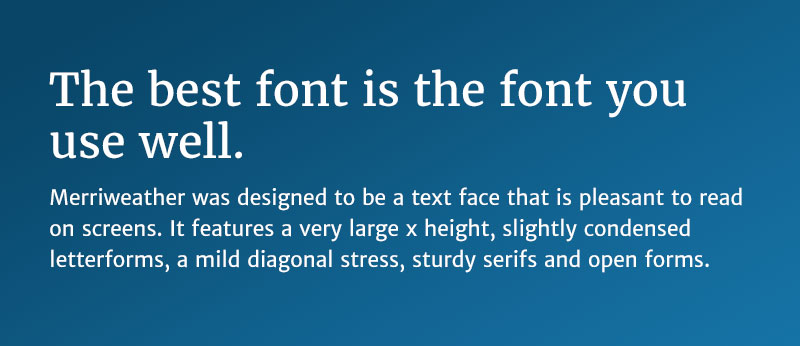
3. Look for a Font With Multiple Weights and Styles
Using a font that comes in various weights and styles, like light, semibold, bold, and others, gives you more flexibility. It lets you convey different messages in your designs using just one font.
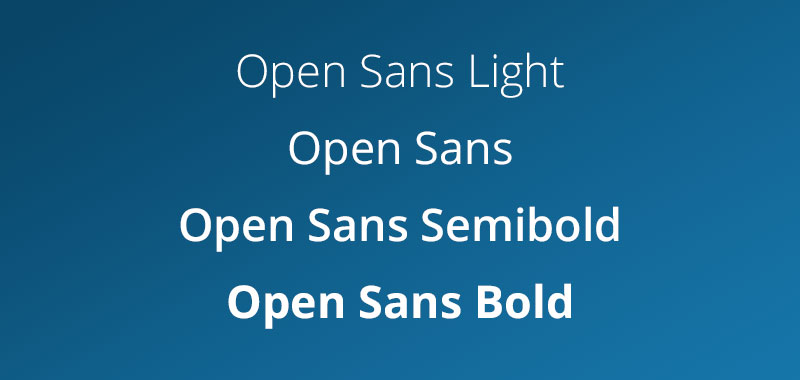
4. There are no hard set rules.
Traditional companies aren’t limited to using only serif fonts, and vice versa. Although serif fonts are often linked to a more traditional feel, and sans-serif fonts are usually seen as more modern, there are exceptions to this guideline. The key factor is how you employ the fonts in your design.
CONCLUSION
In Easil, you have a wealth of type styles and font families at your disposal, especially in our templates. Make the most of this variety by using this guide to help you decide when to employ Serif or Sans-serif fonts, or even a combination of both.
In general, prioritize clear and concise messaging. Choose Sans-serif fonts for headings and small text, especially when clarity and readability are crucial. For larger blocks of printed text, such as on a flyer, Serif fonts are a good choice.
However, it’s essential to consider the entire context rather than relying solely on predefined rules when making design decisions. Experiment with different font combinations, and don’t hesitate to unleash your creativity.
